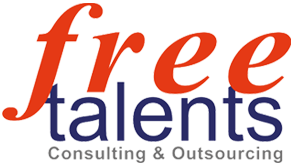
Key Do Prawo Jazdy B Online
Add a review FollowOverview
-
Sectors Assurances
-
Posted Jobs 0
-
Viewed 35
Company Description
15 Weird Hobbies That’ll Make You More Successful At A1 Category

Understanding the A1 Category: A Comprehensive Guide
The A1 category serves as an important framework in different markets, especially in relation to guidelines and classifications. This post intends to offer a substantial summary of the A1 category, exploring its significance, applications, and implications across different sectors. With increasing importance in regulative environments and quality standards, comprehending the A1 category is important for professionals and stakeholders alike.
What is the A1 Category?
The A1 category usually describes a category system used to signify particular quality requirements or regulations suitable in various fields. This category is often utilized in industries like licensing, manufacturing, safety guidelines, and ecological standards. It can differ somewhat depending on the context in which it is applied– such as health care, construction, food security, or innovation.
A1 Category in Different Contexts
To illustrate the versatility of the A1 category, the following table outlines its application across various markets:
| Industry | A1 Category Definition | Significance |
|---|---|---|
| Production | Requirement for material quality and safety | Makes sure product safety and consumer security |
| Food Safety | Certification for food processing standards | Guarantees the security and quality of food products |
| Building and construction | Regulation for building materials | Guarantees structural integrity and public security |
| Healthcare | Category for medical gadgets and services | Centers on client safety and compliance with regulations |
| Innovation | Standard for software quality and compliance | Objectives to boost user experience and security |
Importance of the A1 Category
The A1 category gets significance due to numerous reasons, which can be summed up as follows:
-
Regulatory Compliance: Organizations are often mandated to comply with particular A1 standards to run legally.
-
Consumer Safety: A1 regulations generally intend to secure customers, guaranteeing that items and services meet specific quality and security requirements.
-
Market Access: Adhering to A1 standards enables business to access brand-new markets and competitors by showcasing their commitment to quality.
-
Risk Management: Following recognized A1 requirements assists companies lessen dangers related to product failures or service issues.
-
Credibility and Trust: Compliance with A1 requirements cultivates trust with customers and partners, Kupię Prawo Jazdy boosting the company’s reputation in the market.
Difficulties Faced with the A1 Category
While the A1 category offers a structure for quality and safety, companies frequently experience obstacles in carrying out and sticking to these standards. The following is a list of typical difficulties:
- Understanding Complexity: The standards can be elaborate, making it tough for companies to completely understand and apply them.
- Cost of Compliance: Achieving compliance typically involves substantial financial investments in training, procedures, and innovation.
- Staying up to date with Changes: Frequent updates and modifications to A1 standards may posture difficulties for companies in staying certified.
- Variability in Interpretation: Different stakeholders may translate A1 policies variably, making complex compliance efforts.
Patterns Influencing the A1 Category
As industries evolve, several trends are affecting the A1 category, paving the way for developments in standards and practices. The following list details considerable trends:
-
Technological Integration: The increasing use of innovation in audits and compliance procedures is reshaping how companies approach A1 standards.
-
Sustainability Focus: Increasingly, A1 standards incorporate sustainability metrics, engaging companies to adapt their operations to fulfill environmentally friendly standards.
-
Globalization: International trade and cross-border guidelines require consistent adherence to A1 standards, promoting harmonization throughout various nations.
-
Increased Consumer Awareness: Heightened customer awareness is driving organizations to prioritize compliance with A1 standards to preserve competitiveness.
Regularly Asked Questions (FAQs)
Q1: What does A1 category certification involve?A1 category
accreditation typically includes thorough assessments, audits, and evaluates to ensure that an organization fulfills established standards.
Q2: Are A1 requirements the same throughout all industries?No, while A1 standards share specific principles of quality and safety, they can vary considerably in definition and application across different markets. Q3: How can companies guarantee compliance with A1 standards?Organizations can make sure compliance by conducting routine internal audits, buying training and resources, and
remaining upgraded with changing guidelines. Q4: What is the procedure for obtaining A1 certification?The process usually includes an application, preparation for assessment, conducting an audit, and dealing with any recognized spaces prior to receiving accreditation.
The A1 category plays an essential role in establishing benchmarks for quality and security across different markets. By sticking to these regulations, organizations can make sure compliance
, boost consumer security, and preserve their reputations. Despite the obstacles connected with understanding and carrying out these requirements, the advantages of alignment with the A1 category far exceed the difficulties. As markets continue to develop, the significance of the A1 category is expected to grow, highlighting the need for companies to stay adaptable and responsive to modifications in policies and customer expectations. Whether in manufacturing, food security, health care, or innovation, understanding the A1 category is vital for success in the modern-day market.

